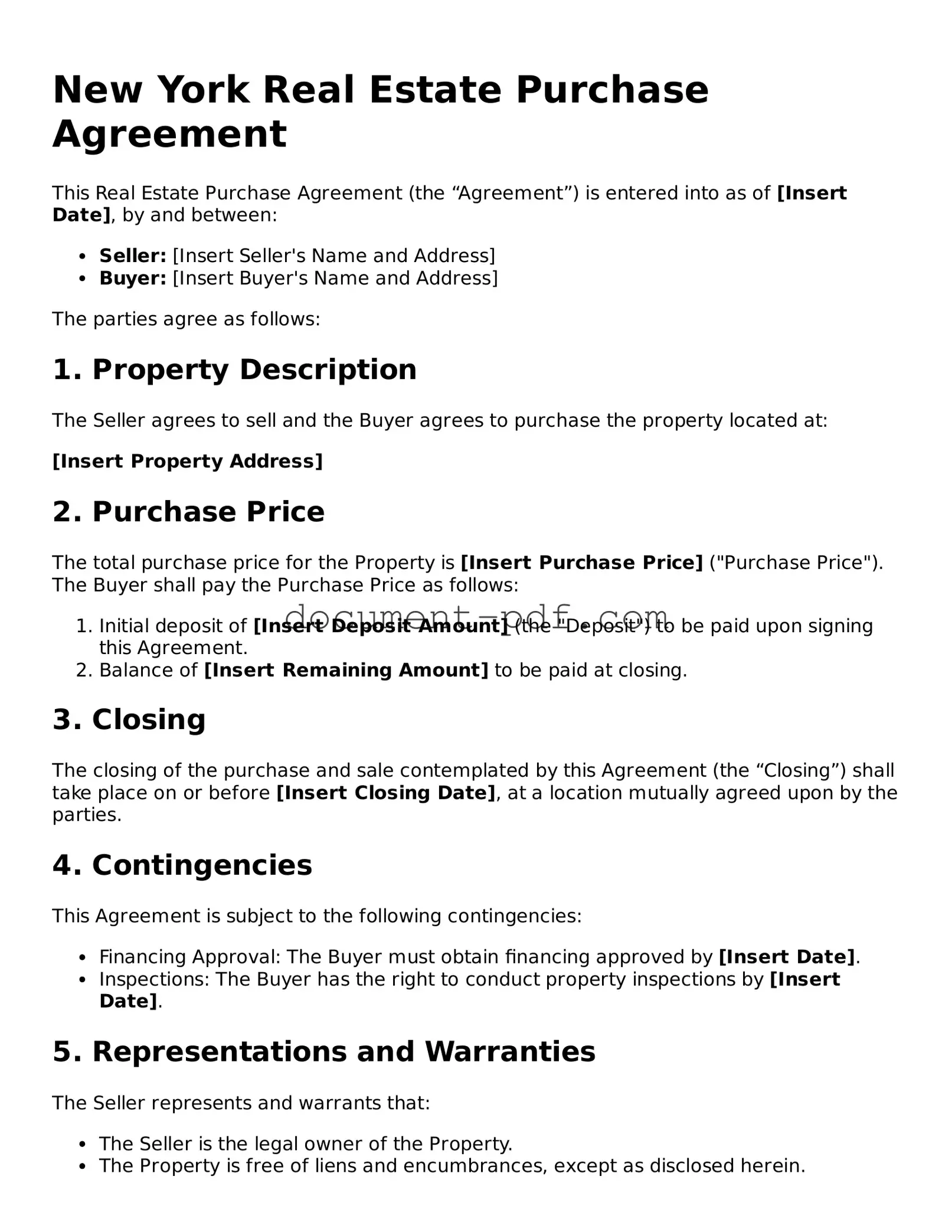New York Real Estate Purchase Agreement
This Real Estate Purchase Agreement (the “Agreement”) is entered into as of [Insert Date], by and between:
- Seller: [Insert Seller's Name and Address]
- Buyer: [Insert Buyer's Name and Address]
The parties agree as follows:
1. Property Description
The Seller agrees to sell and the Buyer agrees to purchase the property located at:
[Insert Property Address]
2. Purchase Price
The total purchase price for the Property is [Insert Purchase Price] ("Purchase Price"). The Buyer shall pay the Purchase Price as follows:
- Initial deposit of [Insert Deposit Amount] (the "Deposit") to be paid upon signing this Agreement.
- Balance of [Insert Remaining Amount] to be paid at closing.
3. Closing
The closing of the purchase and sale contemplated by this Agreement (the “Closing”) shall take place on or before [Insert Closing Date], at a location mutually agreed upon by the parties.
4. Contingencies
This Agreement is subject to the following contingencies:
- Financing Approval: The Buyer must obtain financing approved by [Insert Date].
- Inspections: The Buyer has the right to conduct property inspections by [Insert Date].
5. Representations and Warranties
The Seller represents and warrants that:
- The Seller is the legal owner of the Property.
- The Property is free of liens and encumbrances, except as disclosed herein.
6. Governing Law
This Agreement shall be governed by and construed in accordance with the laws of the State of New York.
7. Entire Agreement
This Agreement constitutes the entire agreement between the parties and supersedes all prior negotiations, discussions, or agreements.
IN WITNESS WHEREOF, the parties have executed this Agreement as of the date first above written.
Seller's Signature: ___________________________ Date: ________________________
Buyer's Signature: ___________________________ Date: ________________________
All parties have read, understood, and agree to the terms herein.
